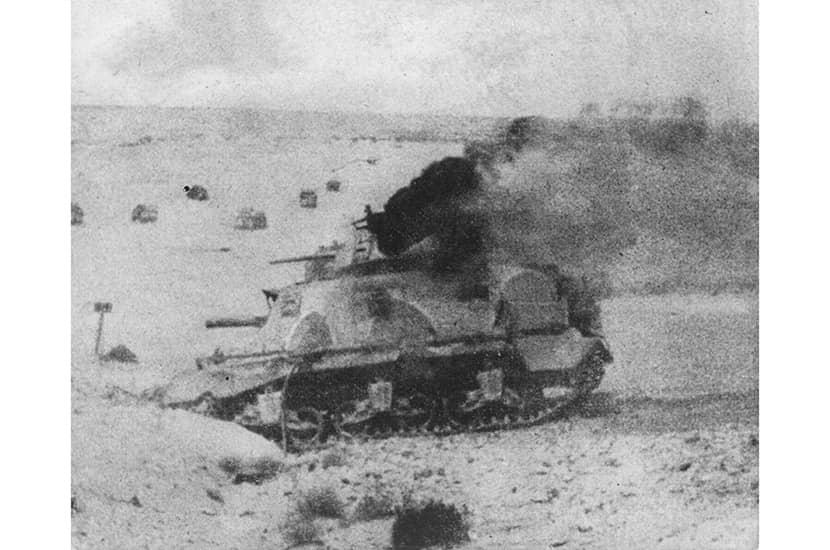If Joseph Stalin was right about one thing it was his assertion that “the death of one man is a tragedy, the death of millions is a statistic.” Numbers don’t inspire empathy. They don’t tell stories. Nothing exemplifies this principle better than World War Two. The deadliest armed conflict in human history killed an estimated 70 million people or 3 percent of the world’s population, and yet these numbers will make few people weep. They are difficult to fathom without faces.
James Holland’s greatest strength as a military historian is that he brings humanity to his work — a rare trait in a field of research that can sometimes feel dominated by those obsessed with numbers. Where others recite regiment numbers and calibre sizes, Holland is interested in the men behind the faceless facts.
In Brothers in Arms he invites his readers to follow the Sherwood Rangers, a British tank regiment, on their way from the Normandy beaches into Germany as World War Two came to its bloody conclusion. Drawing on a wide range of sources, he paints a remarkably vivid picture of what his subjects endured and achieved in the closing stages of the conflict.
Like a fly on the white-painted interior wall of the Sherman tank, we observe the hot, fume-filled air that makes the crew choke as the extractor fan struggles to clear the smoke. When the tank is not moving or firing, the stale air reeks of “food, sweat and piss,” Holland informs us in his matter-of-fact tone. There was nothing glorious about the slow-moving targets in which his heroes were making their way to the Rhineland.
In the tanks sat men such as the 24-year-old Captain Keith Douglas, possibly the finest poet of the war but a somewhat volatile character. Although from an originally comfortable middle-class background, he harbored deep resentment about his upbringing. His father lost his chicken business, while his mother suffered badly from health problems. When Douglas’s parents divorced and his world fell apart with their marriage, it left a permanent mark on his sensitive soul. In the fires of war, however, he found a soulmate in John Bethell-Fox, with whom he served in North Africa. The army became a second family to the highly strung writer, and he looked forward to immortalizing his pals in a superbly written account of their action together, for which he had already received a publishing deal.
Bethell-Fox would later write that a “burning tank is amazing to watch,” remembering the moment he saw two tanks being hit and lit up in blazing flames for a long time. When he hurried back to his own tank, he found that it too had been hit and the crew badly wounded. All he could do was cover the men and provide them with some morphine. “They just lay there bleeding and silent.” When his wounded comrades were finally picked up by a jeep, he reported back to his superior officer. Fighting was still furious and mortar shells crashed around them as Bethell-Fox was told that his friend Keith Douglas had died from a shell burst. “I just stared,” he wrote, “and I felt hot tears running down my cheek.”
Douglas was one of 148 Sherwood Rangers who were killed in action. The unit’s casualties amounted to some 40 per cent of the regiment, an enormous figure, but one that remains a cold statistic without the stories of the men behind it. Douglas was a complex man who found it difficult to get on with his fellow officers, whom he accused of snobbery. But he found solace in writing, as well as in his deep and real friendship with Bethell-Fox. He was only 24 when he was suddenly killed — alive and well one moment, gone the next.
Brothers in Arms does more than just tell the story of the Sherwood Rangers. Having interviewed veterans, spoken to their families, read their letters, seen their photographs and walked in their paths, Holland has delved into their world and brought their characters to life. Behind the 148 deaths were 148 lives with families, relationships, upheaval and joy. The book is a powerful and moving reminder that there is tragedy in statistics.
This article was originally published in The Spectator’s UK magazine. Subscribe to the World edition here.


















